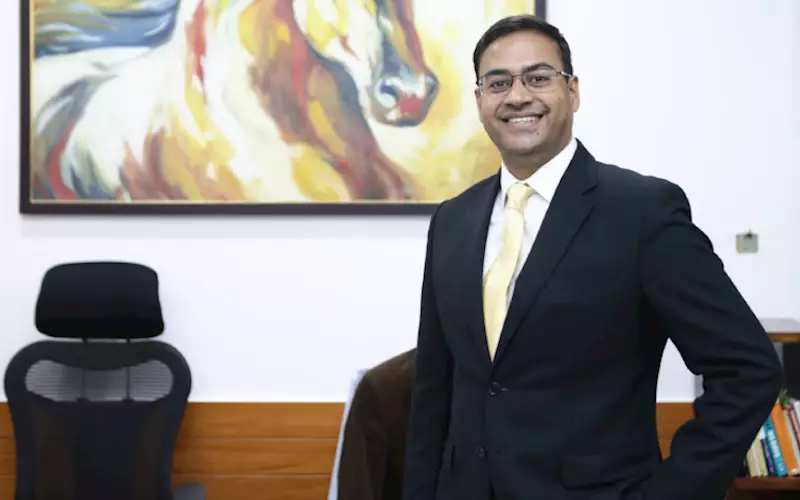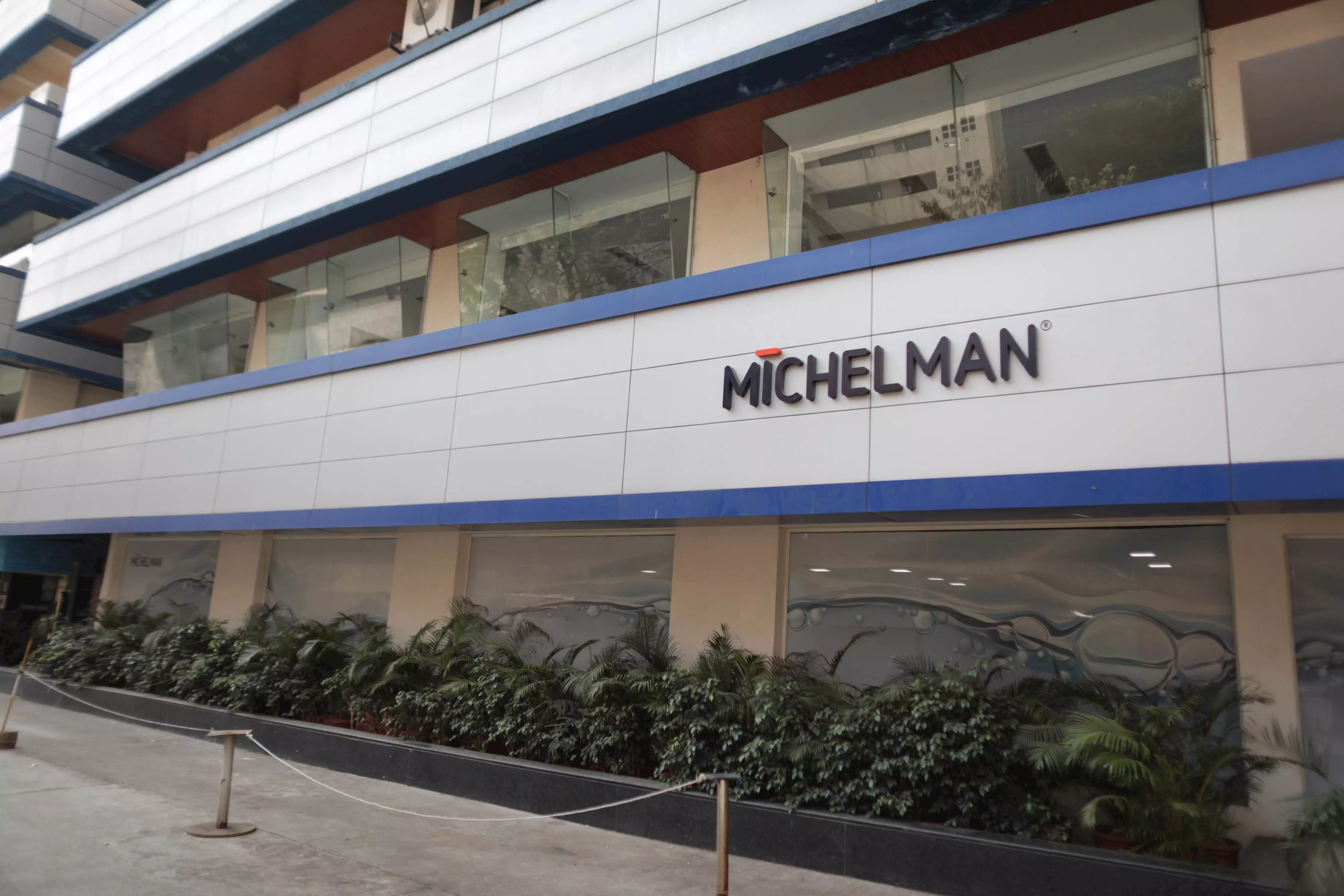Shailesh Nema: Covid-19 has created new opportunities
While the print and packaging industry will have significant challenges post the Covid-19 pandemic, it will also create opportunities to gain market share, says Michelman’s Shailesh Nema.
The demand for packaged products has increased during the crisis and has played a key role in aiding the food relief measures from cities to rural areas. Thus, he advises the printing and packaging industry to see this as a chance to look for market penetration in specific product segments and explore newer ones.
In this WhatPackaging? article, Nema provides insights on the pandemic’s impact on food packaging and how to increase value within one’s business
08 Aug 2020 | By WhatPackaging? Team
Growing opportunities in food packaging
Applications for food packaging have a tremendous opportunity in India. There are multiple unique and innovative products, which are featuring in the Indian market. More food trays, clam-shell burger boxes, paper cups, paper bags and so on, are growing in terms of consumption.
Paperboard converters have an opportunity to capitalise on the plastic ban, which eventually will be enforced. They can come up with solutions without using PE layers inside for paper cups and food trays, which will make their products 100% recyclable and will also help in sustaining the industry.
Moreover, this crisis has opened doors for packaged food products in a bigger way and results will come as the market opens and subsequently expands. There are many positives to look at.
Elasticity in business
Many firms in India price their work the same no matter who the customer is, not taking into consideration that different customers have a different price elasticity. Printers have to become inelastic – provide more services, control the data, work with the sales team to classify customers into elastic and inelastic. Now, this is a result of hyper-competition in the sector.
When a provider focuses on the same range of products, then price becomes a solitary tool, which results in inelasticity. The effective strategy to deal with it is to spread awareness in the organisation and add value to one’s offerings. Customer segmentation is an absolute necessity for the success of any pricing strategy. In the absence of which, growth and business viability come under question.

The crisis has opened doors for packaged food products in a bigger way, says Nema
The right pricing
There are hidden costs which often balloons the cost of the product which are partially ignored in the pricing. Segregation and quantification of waste, better housekeeping of the plant and effective implementation of a proven manufacturing strategy can deal with this effectively. The accountant must always review his costing method and methodology to stay updated.
Many converters adopt a pricing method which allows a waste of 3-7% for run-of-the-mill jobs and this can go up to 15% in case of a demanding job. While the ideal, in my opinion, is below 4%, there is a clear opportunity to bring it down significantly for demanding jobs.
Besides, the concept of an optimal price is a myth. You can never be too sure of a price, which is a derivative of your costs, and the value it offers to your customer. Many a time we fall into the trap of looking inside (our costs) and competition and ignore the value of the product being offered to the customer. We must have optimised (or move towards) costs and know the competition and find a balance to give you the right price.
Our industry is unique in multiple ways. One of the most common mistakes our industry is susceptible to is joining the race. There are many innovation opportunities in the packaging and printing sector and few are taking lead and most are choosing to follow. This is a big area of improvement. Innovation is key.
Achieving consistency in print
Achieving consistency in print quality is a combination of man, machine and material. A machine which works on multiple speed with minimal deviation, a material which has minimal tolerances and an operator who is aware of the behaviour of machine and material; delivers an optimal product consistently.
The 5S system of the lean manufacturing method is very effective in delivering high-quality products consistently. The 5S denotes sort, set in order, shine, standardise and sustain. Many Indian converters have implemented 5S or similar manufacturing methodology. However, a large number of medium and small packaging convertors are yet to implement this or similar methods.
Putting software to proper use
Awareness among employees and demonstrating the efficacy of software tools is the key. Another thing is to involve your key employees during such software implementation explaining the need and outcomes at each step gets their buy-in and makes the investment fruitful. Employees must feel that this software implementation is being driven, executed and used by them and any future modifications will be based on the feedback given by them.
Sustainability at Michelman

The Michelman Innovation Centre for Coatings in Mumbai helps brand owners and packaging converters can ideate, make a prototype of packaging structures and test their different barrier properties. Thus, helping in designing an optimal packaging structure which is in compliance with waste management regulation acts. MICC has played a vital role in designing multiple mono materials and mono family flexible packaging structures which are truly recyclable and deals effectively with plastic waste
The company has altered a range of paper- and film-based packaging structures in such a way that the manufacturing waste carried a positive recycling value, thus reducing the cost of the product. Its solution for paper cups eliminated PE layer from cup stock to reduce wastage by making the product recyclable.
In addition, Ditto is Michelman's solution for edible oil packaging in which the company’s coatings eliminate the use of EVOH/Nylon in a PE structure making it a mono-material package, which is recyclable.
The coating specialist is also working with a milk company to increase the shelf life of their milk pouches by using water-based coatings, which enhance oxygen barrier to reduce wastage and improve the product’s shelf life by one day. “We are also achieving this cost-effectively, which makes it a viable project for the milk industry,” says Nema.
A smart factory
A smart factory has to be flexible, quick and productive. I have witnessed a factory which adopted a unique system of feeding consumables to the series of production machines. The movement of this feeding unit was planned (algorithm-based) in such a way that the plant was operating optimally without cluttering the shop floor, which resulted in productivity, sustained quality and better house-keeping.
If you deploy a section of the workforce for doing only job changeovers, the system they operate in becomes more effective with the optimal learning curve. It is the best way to define productivity wherein there is a clear divide between set-up and productive time. This data also helps in deciding on future workforce and assets.
Michelman Innovation Centre for Coatings (MICC) in Mumbai
Leader's focus
It is said, 75% of a CEO’s time should be focused on looking into the future and not analysing daily reports. But this devotion is very challenging. I am lucky to have an excellent team who had been working with me for many years and manages different functions as per my leadership style. Nonetheless, a minimum half the time goes into current affairs.
This also indicates that a lot goes-in ‘in current’ in our economy which requires attention. I have improved in the percentage by effective delegation to my team members. One important aspect of it is ensuring there is a minimum of conflict between different functional heads else a majority of CEO’s time goes into conflict management.
Print in 2030
Everyone talks of certain categories of print which will vanish. However, I believe that even by 2030, all existing printing technologies will exist with a change in their existing market share. It is clear that digital printing with the advancement of cost-effective consumables will gain share and will become a leading printing technology by 2030. Each of the other printing technologies such as gravure, offset and screen will co-exist as well.
Rapid-fire with Nema

One lesson you learnt during the lockdown which you would like to share?
We need very little to live a full life and health is everything.
One print product or packaging sample created by one of your customers that amazed you?
Temporary beds to fight Covid-19 made from cardboards using Michelman coatings. This has been used in temporary shelters and hospitals.
One key lesson that you have learnt from a customer in India - and you have adopted in your factory?
Curiosity is key for innovation and success. Many successful Indian entrepreneurs are a curious lot and it is inspiring.
An Indian customer who has made the production process more efficient. Something print CEOs in India can easily implement...
A packaging laminate goes through various processes and an efficient process and flow is a bare necessity for its business sustainability. I have witnessed how an efficient change in the plan layout reduces the waste and improves the lead-time for each process and overall product.
Plans for the rest of 2020
Stay fit and stay positive. Every crisis has an opportunity, the bigger the crisis, the bigger the opportunity. We just need to look more attentively. On a more pragmatic plan, we hope to achieve what we did in 2019 and look at this year as a ‘pause’ year and look for more aggressive growth in the coming years. This crisis has opened doors for packaged food products in a bigger way and results will come as the market opens and subsequently expands. There are many positives to look at.












 See All
See All